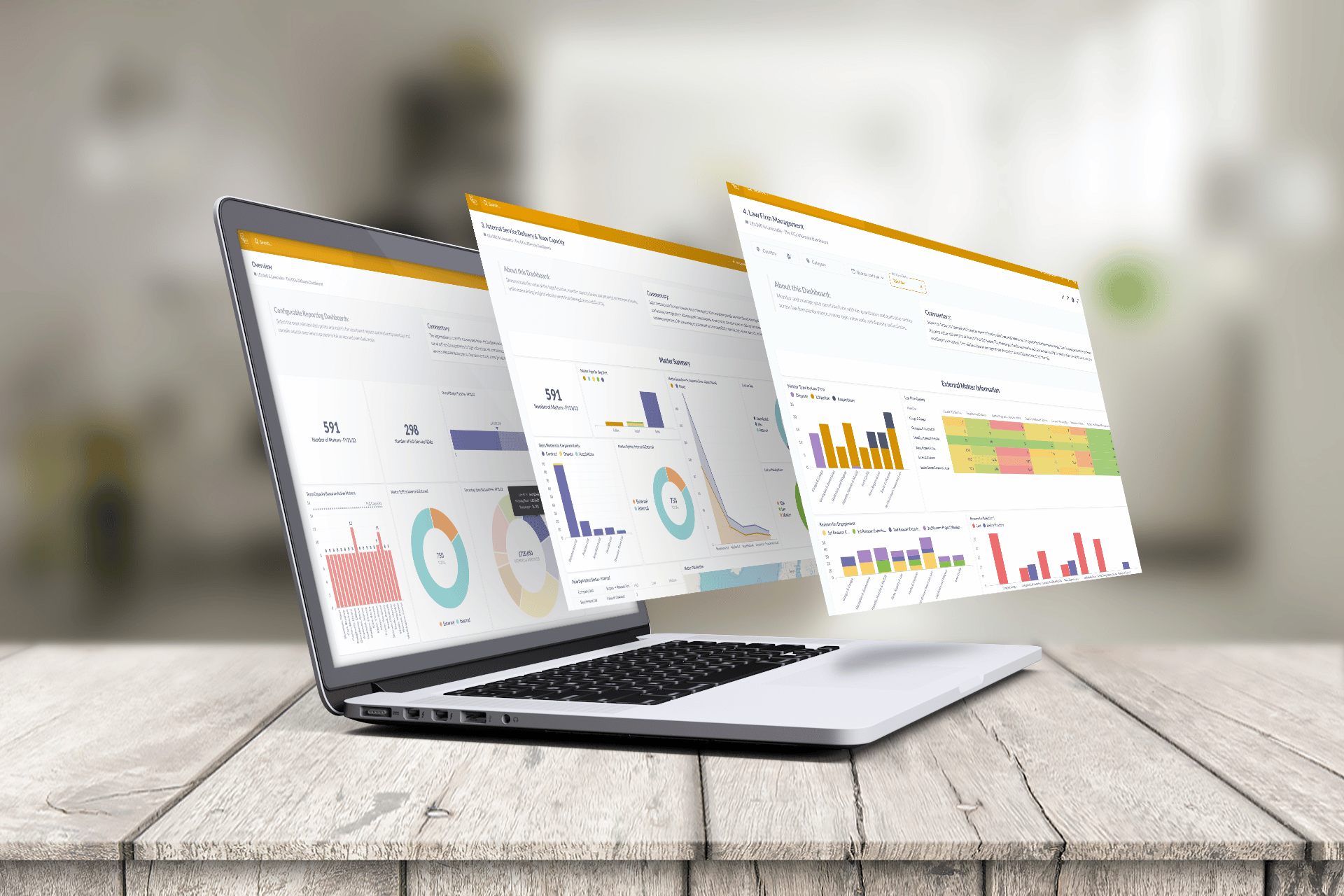The General Counsel (GC) and their legal function are increasingly acknowledged as crucial supporters, enablers, and advisors within their organisation.
However, when General Counsel is invited to sit at the table, clearly demonstrating impact, value and performance is required. Like their finance department colleagues, the legal department also needs to readily access, analyse and report on key drivers, emerging trends, important metrics, and risks to be managed.
Meeting expectations and enhancing relationships
When the finance director attends meetings supported by reports and metrics, what is the GC or CLO bringing to the table? Speaking the language of the board and executive leaders means a foundation of robust data-driven insights that support and showcase value, risk, efficiency, and productivity. Further, metrics that emerge from the heart of the legal function can inform and be a key indicator of the organisation’s overall health, such as sales cycles, contract revenue, and regulatory or litigation risk.
While meeting expectations and supporting data-based decisions is essential, it is also crucial to enhance and deepen business relationships internally and externally. Internal metrics can provide insights around workload and service delivery and help the GC understand the team’s overall well-being and ability to support capacity and demand. Likewise, strategic relationships with law firms can be enhanced via a systems approach that supports and strengthens both sides of legal relations with better inputs, more feedback, and greater visibility of performance and outcomes. Viewing the legal system holistically can enable the GC to adjust strategic direction, continuously improve, and bring internal and external stakeholders on the journey together.
Getting started
As legal departments mature and take steps towards developing reporting processes and metrics, three common challenges emerge:
- Focus – when so much data is available, what should we measure and track?
- Sustainable – how do we avoid spending precious time and resources on data capture and reporting?
- Accessible – when we don’t have a big budget or specialist internal resources, how can we get the right technology and support?
According to former General Counsel, Mr Mo Zain Ajaz, it is vital to start with the end in mind.
“This means starting with the specific reports and dashboards that the GC wants on an ongoing basis – the important ones that will drive decisions and identify areas of risk or improvement,” said Mr Ajaz, founder of legal operations consultancy LEX360.
Every part of the legal system can be measured, but it is important to identify which levers are the most important for the individual organisation and then align processes to ensure that the right actions are being measured and tracked, he outlined.
LEX360 has identified 7 best practice dashboards and reporting areas that are essential for a modern GC to demonstrate value and guide the legal function:
- Overview – for board reporting
- Matter intake, allocation and self-service
- Matter analytics, internal service delivery & team capacity
- Contract register
- Litigation & major projects
- Spend analytics
- Law firm management
Each of these dashboards focuses on an important part of the extended legal function with high-level reports and deep-dive analysis available.
Connecting the dots
A successful outcome for in-house legal departments can be distilled into two key requirements:
- A set of dashboards that provide insights across every aspect of the legal function
- They are easy to maintain and update
To achieve these goals, according to Mr Ajaz, the GC should allocate time and energy to set up the dashboards and processes to do it once and get it right up-front.
“Being clear on what you want to measure, how you want it reported and developing the right processes to support it. This will pay significant dividends down the track”, he said.
“Ultimately, we want to automate the reporting and data capture as much as possible, and this is achievable with a focus on what matters most.”
Supported along the way
Mr Ajaz and LEX360 start by working alongside the General Counsel to help identify and select the right data points, reports and dashboards for the organisation. Once the data points are defined, the processes and supporting technology can be set up to capture, collate and report.
Building processes and systems to enable automated data capture and reporting is not something that happens in isolation. Mr Ajaz believes in working hand-in-hand with the legal team and the General Counsel to provide coaching and support along the way.
Partnering with the right technology provider is essential. For LEX360, this means technology that supports process-driven legal services and provides the right level of support and configuration for future success. That is why LEX360 partnered with Lawcadia and utilised their award-winning, two-sided legal operations platform as it hit the brief.
Focused, sustainable and accessible outcomes
The legal function is complex, inter-related and non-linear, so achieving sustainable and meaningful outcomes requires a ‘systems thinking’ approach that considers the whole internal and external function. Identifying the right levers that contribute to positive outcomes, measuring and monitoring the right behaviours and drivers, and then having access to meaningful reports and insights can be transformational.
Focusing on what matters, connecting the legal data points, spending time upfront to get it right, and then using processes and technology to eliminate future wasted resources is the ultimate formula for success. More importantly, this is attainable by every modern General Counsel.

